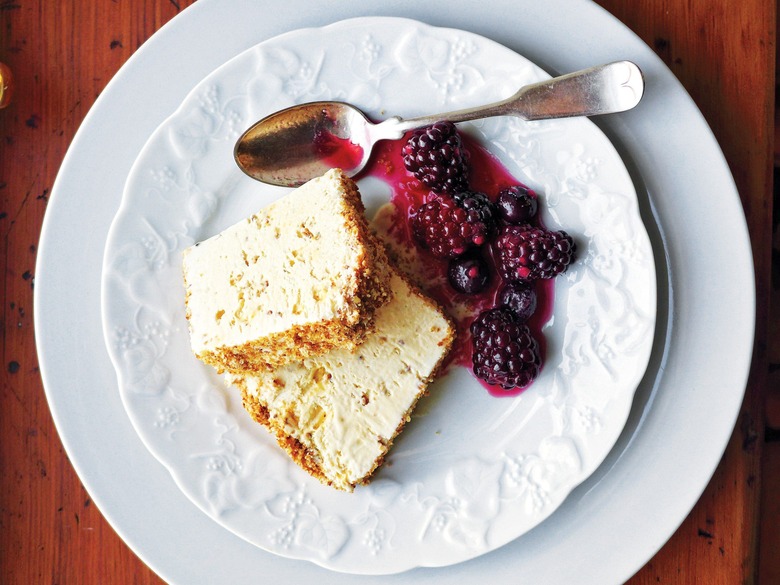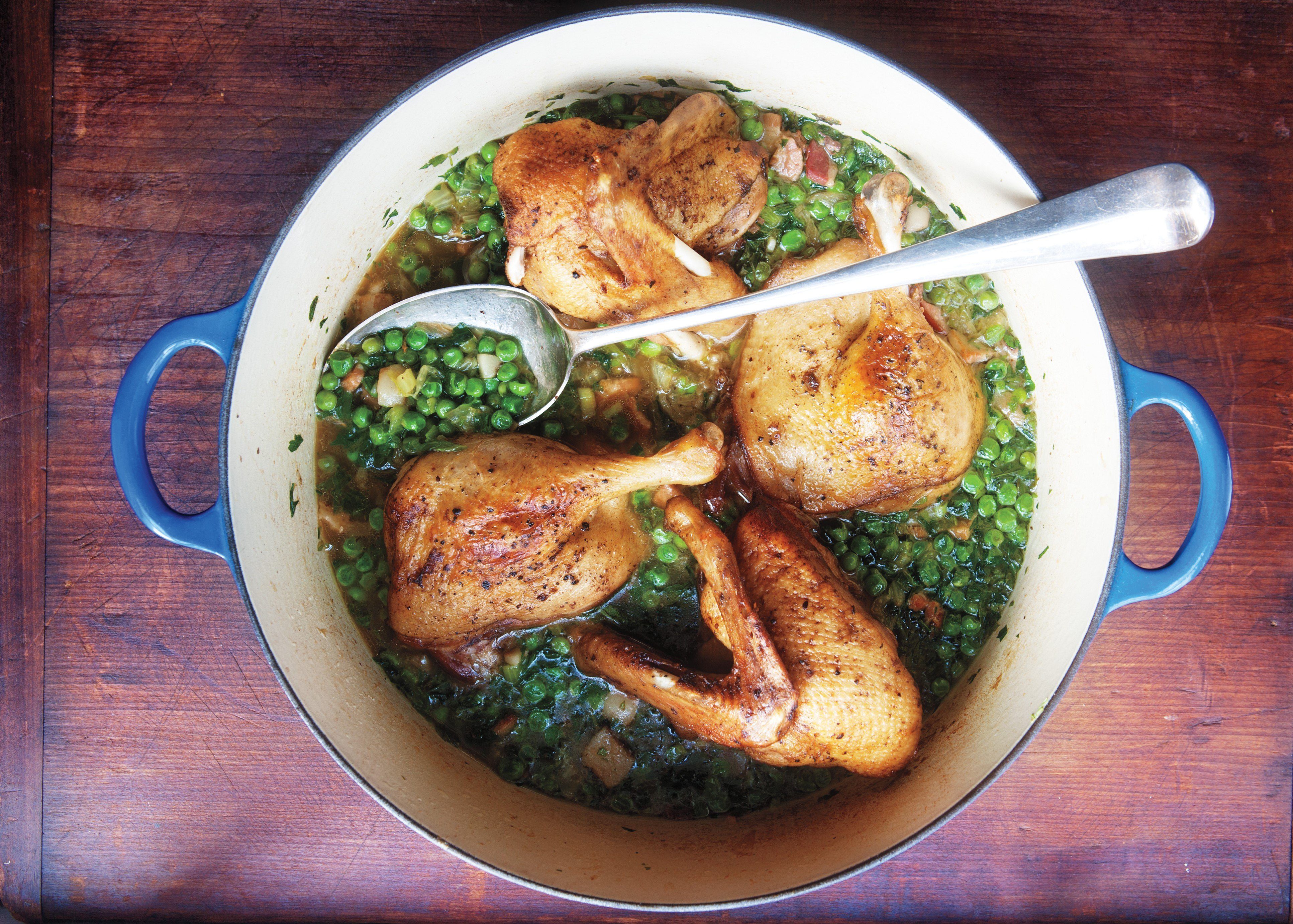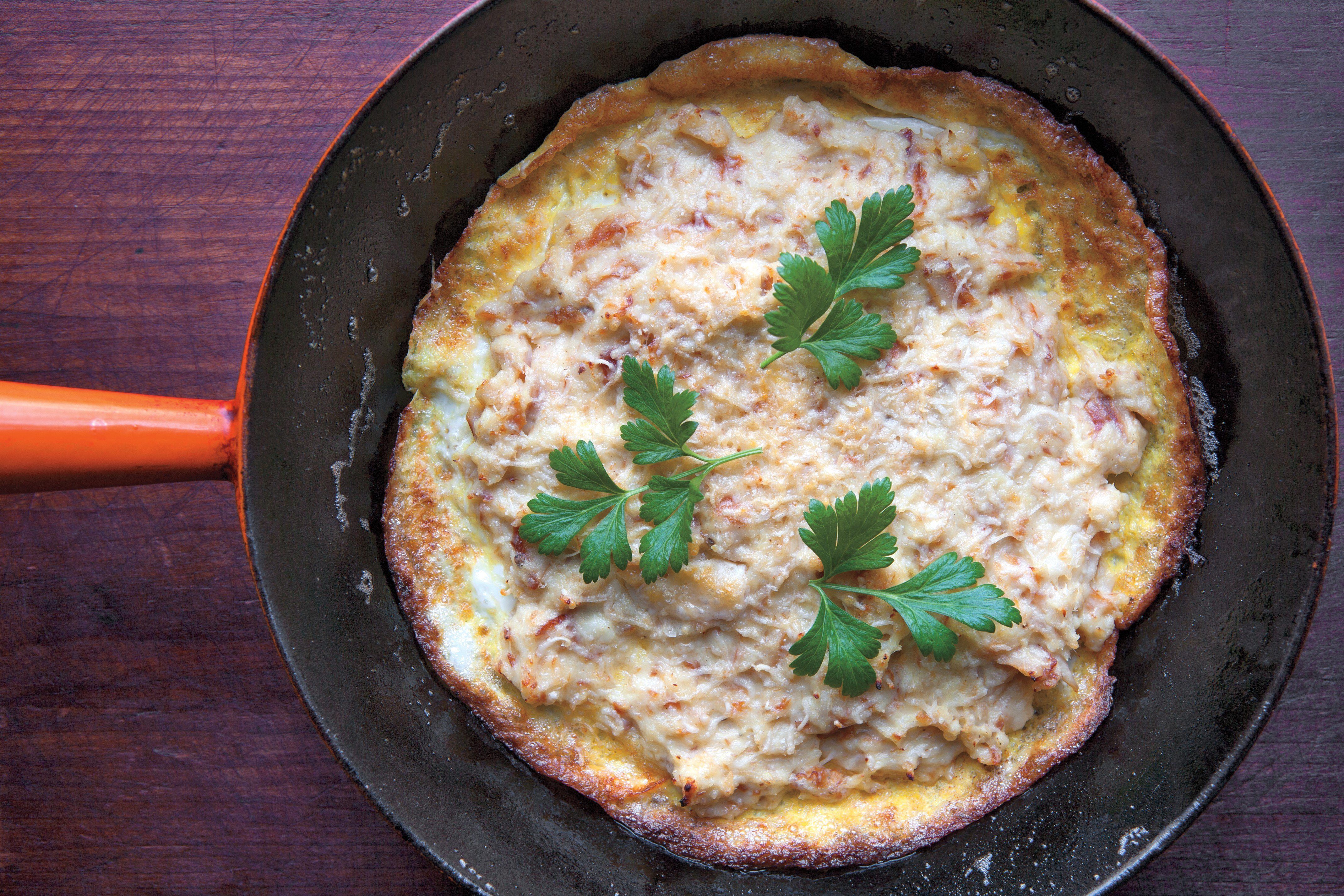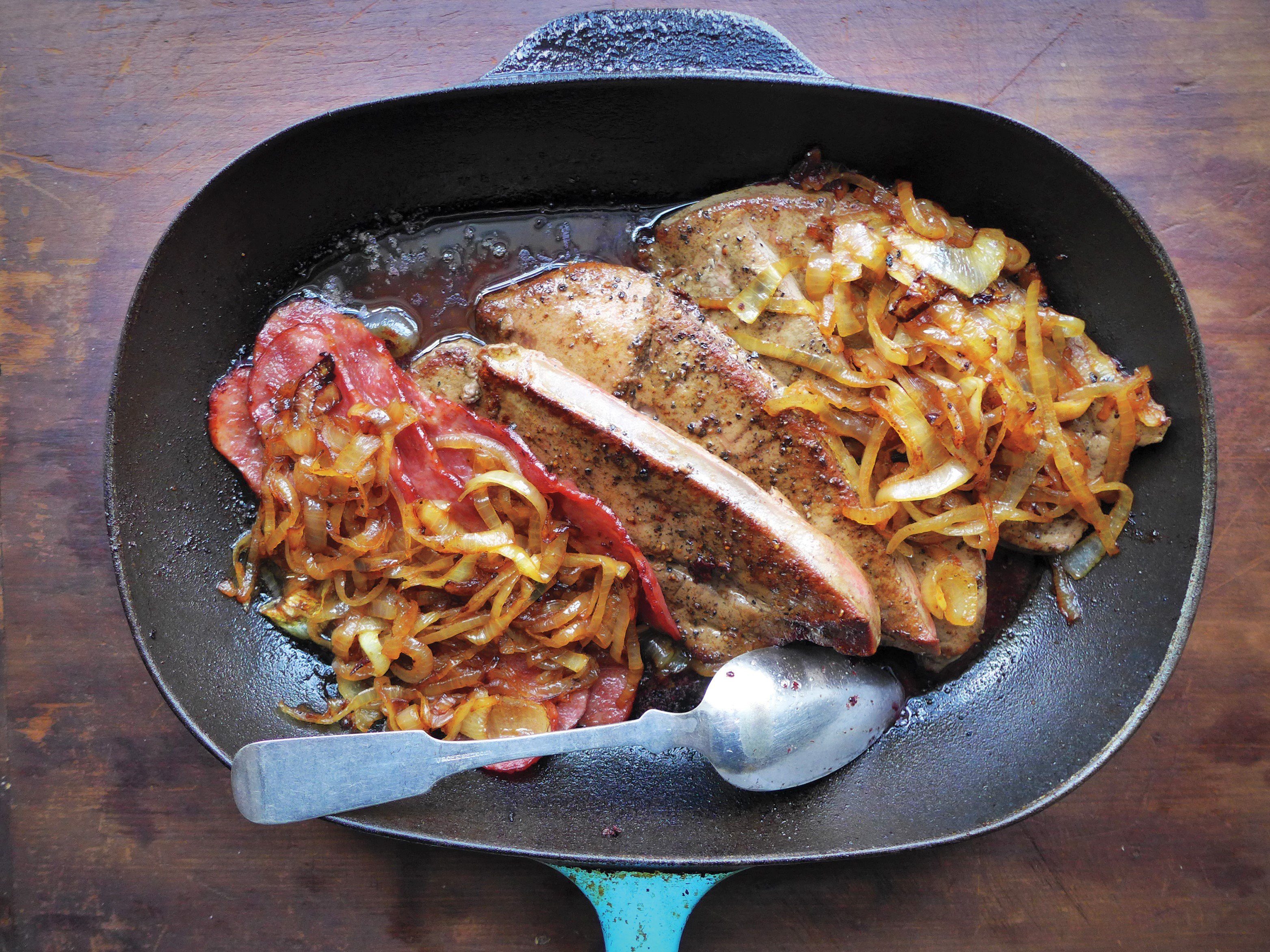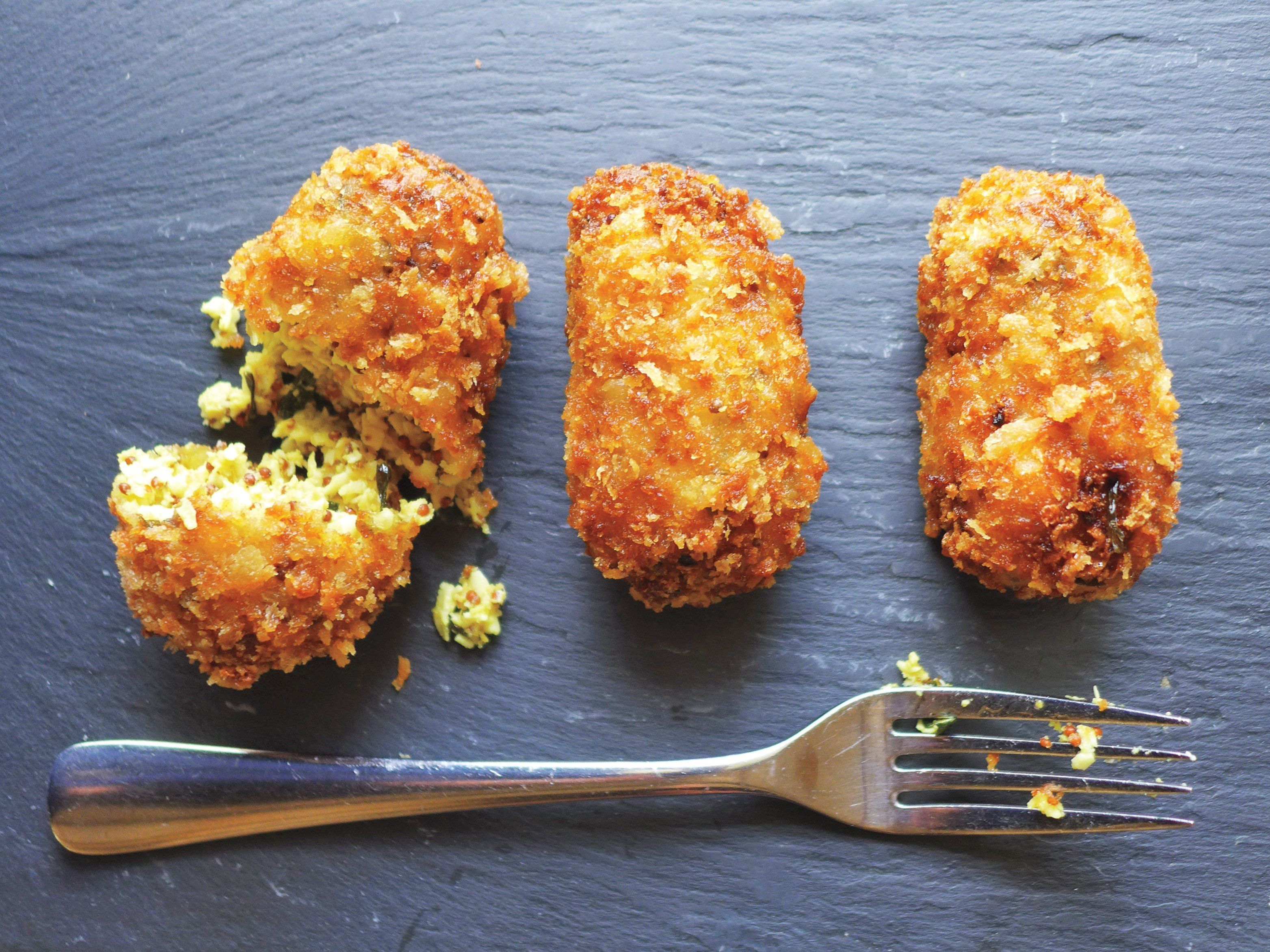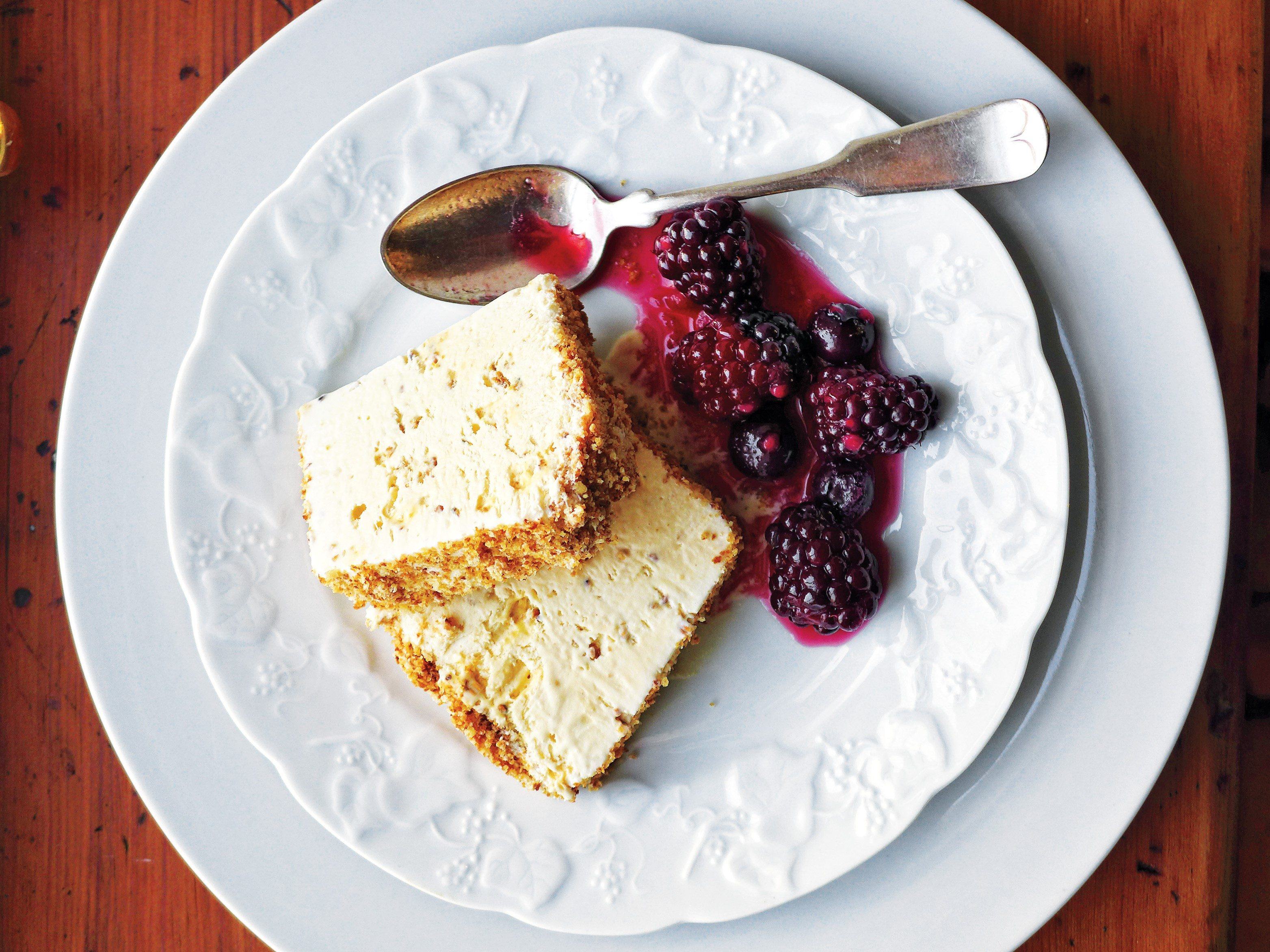Epicurean Legend Colman Andrews Authors 'The British Table'
We may receive a commission on purchases made from links.
Like many goods stories, culinarian Colman Andrews' Anglo-infatuation began with a girl. As a young man, he chased an English girl to her native country only to be enchanted by the bright red telephone booths, ancient architecture, and the ritual of an afternoon cuppa.
Today, Andrews, who helms the editorial department at The Daily Meal, is an eight-time James Beard Award winner, co-founder of Saveur, and the author of now nine culinary titles. Notably, he is considered an authority on Spanish Catalonian cuisine — and now British cuisine, too, for that matter.
Braised Duck With Peas
His new cookbook, The British Table: A New Look at the Traditional Cooking of England, Scotland, and Wales is a textbook just as much as it is a cookbook and is a resource for traditional British recipes and their origins. Each chapter delves deep into Britain's long history, often citing centuries-old writers, philosophers, and culinarians.
A playful quote from epicure William Kitchiner excerpted from Apicius Redivivus: or, The Cook's Oracle (1817) opens the book: "To tasteful plates, keen appetites, and healthful and capacious stomachs." (A very "Colman quote" to anyone who has ever had even a brief conversation with him.)
Interestingly, British food was, for a time, considered bleak, boring, and tasteless; as Andrews writes reflecting on his English travels, "The secret of dining well in England in those days: Eat foreign." To this point, Andrews addresses the surprise degradation of English cuisine, highlighting the fact that the same recipes are still widely cooked and eaten today — although, now they just taste better. "The mystery isn't so much why British food is so good today, but why it ever wasn't," he writes. "Why a once diverse and abundant cuisine degenerated for more than a century to the point of becoming an international punchline."
For recipes, Andrews devotes whole chapters to breakfast (covering, of course, "The Full English"), savory pies and puddings, and teatime. Within its covers, readers can find recipes for Scottish haggis (and advice for hunting haggis — wink, wink), neeps, tatties, Yorkshire pudding, roasts, as well as curries. As a Daily Meal exclusive, we've shared recipes for some of Andrews' favorite dishes including Monkfish Curry, Braised Duck With Peas, Liver With Bacon and Onions, Glamorgan Sausages, Caledonian Oatmeal Ice Cream With Berries, and the legendary dish from the Savoy Hotel, the Omelette Arnold Bennett.
Omelette Arnold Bennett
The photography in this book is particularly of note — typical of Christopher Hirsheimer and Melissa Hamilton of Canal House, naturally — as it captures the warmth and comforting elegance of English cooking and dining. The photography for something as simple as eggs and soldiers, for example, is undeniably enticing and pulls readers into Andrew's thorough description and recipe.
As per custom with our Cookbook of the Week features, I spent time with Andrews to ask him more about his book and his personal approach to cooking, eating, and dining. Read on for the interview:
The Daily Meal: What is your philosophy of cooking (and eating)?
Colman Andrews: I basically believe that anyone can cook. Sure, some people have more natural talent at it than others, or are more interested in trying to develop their skills and willing to devote more time and effort, but cooking shouldn't intimidate anyone. It should be fun, or at least not a source of anxiety. I think if you buy good raw materials and figure out a few basic techniques, then practice them, learning how to adapt them a little to the circumstances and the seasons, that's really all you need to do. Just making something good for dinner, no matter how simple, whether just for yourself or for family or friends, can be immensely satisfying on several levels. Unless you're a chef, though, you don't need to try to cook like one. Forget the fancy chefs' cookbooks and the arcane kitchen appliances. A knife, a stirring spoon, a pan, a source of heat — that's really all you need. The rest is gravy.
What is your favorite recipe in the book and why?
I'm fond of every recipe in these pages (or I wouldn't have included them), but I'd have to name two, very different from one another, as my real favorites. One is Mince and Tatties. This is simply ground beef cooked loose with onions and carrots, with the Scottish additions of toasted oats and an optional bit of black pudding (blood sausage), spooned over creamy mashed potatoes. It's comfort food par excellence, absolutely simple to make. The other is one of the few genuinely historical recipes in the book, Mrs. Raffald's Green Peas Soup, which dates from 1769. There are many ingredients involved, though no particularly challenging techniques are called for. It just layers flavor upon flavor — hints of ham, veal shank, bacon, celery, turnip, carrots, Swiss chard, and more — to end up with what is basically just pea soup. But what pea soup!
Liver With Bacon and Onions
Would you rather cook at home or eat in a restaurant?
I love restaurants and have spent far more time and money in them than has probably been good for me over the years. There are restaurants in many parts of the world that I greatly look forward to visiting. That said, most nights I'd much rather cook at home, where I can use good ingredients that I've picked out myself and cook them to my liking (and at least sometimes to my wife's), and drink good wine without having to pay three or four times what it's worth.
What is your favorite restaurant in Britain?
That's a tough one, as there are so many good places now, but if I were passing through the country and had time for only one meal, it would almost certainly be at Quo Vadis in London, where the chef is Jeremy Lee — who generously let me use many of his recipes in my book, and who is one of the best natural cooks I've ever known.
Glamorgan Sausages
How do you hope readers will use this book, what do you hope they take away?
I think anyone who's interested in the history and culture of food, in general, could enjoy this book just by reading the chapter introductions and literary and culinary excerpts, even without ever trying one of the recipes. That said, I've chosen mostly straightforward dishes to represent British cooking, some admittedly more difficult to successfully execute than others but none that require professional skills, and I've tried to write the recipes in a logical and easy to understand way, offering enough information without overloading them with details.
What's next for you? Already dreaming of the next book, perhaps?
My publisher and I are still discussing what my next project for Abrams Books should be. At some point in the next few years, though, I plan to tackle a major revision, expansion, and updating of my first cookbook, Catalan Cuisine, originally published in 1988. The culinary landscape in that corner of Spain has changed incredibly in the past quarter-plus-century, and I'd like to be able to represent the changes in a way that ties them organically to the origins of Catalan cooking, all the way back to medieval times and up through the exciting culinary advances of the pre-elBulli era, as well as everything that's happened since Ferran Adrià revolutionized cuisine from his isolated outpost on the Catalan coast.
Caledonian Oatmeal Ice Cream With Berries
Anything else you would like the share?
British cooking has never been sexy in the way that Thai or Italian or Cajun cooking has, and it never will be — but what I hope this book suggests is that it eloquently expresses the virtues of culinary honesty, simplicity, and — perhaps surprisingly to some — variety, and that it's well worth considering seriously, enjoying when you're in the U.K., and at least occasionally trying to reproduce on our own shores.
